Herbert Hoover Worksheets
Do you want to save dozens of hours in time? Get your evenings and weekends back? Be able to teach about Herbert Hoover to your students?
Our worksheet bundle includes a fact file and printable worksheets and student activities. Perfect for both the classroom and homeschooling!
Resource Examples
Click any of the example images below to view a larger version.
Fact File
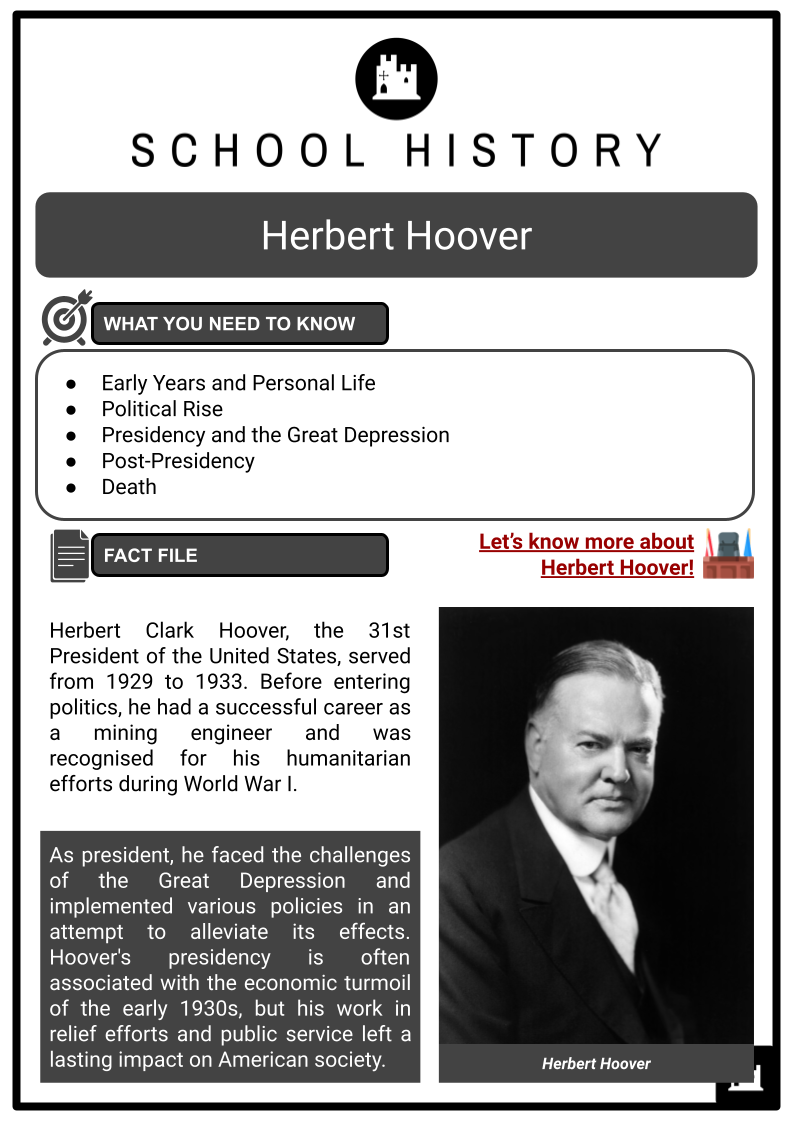
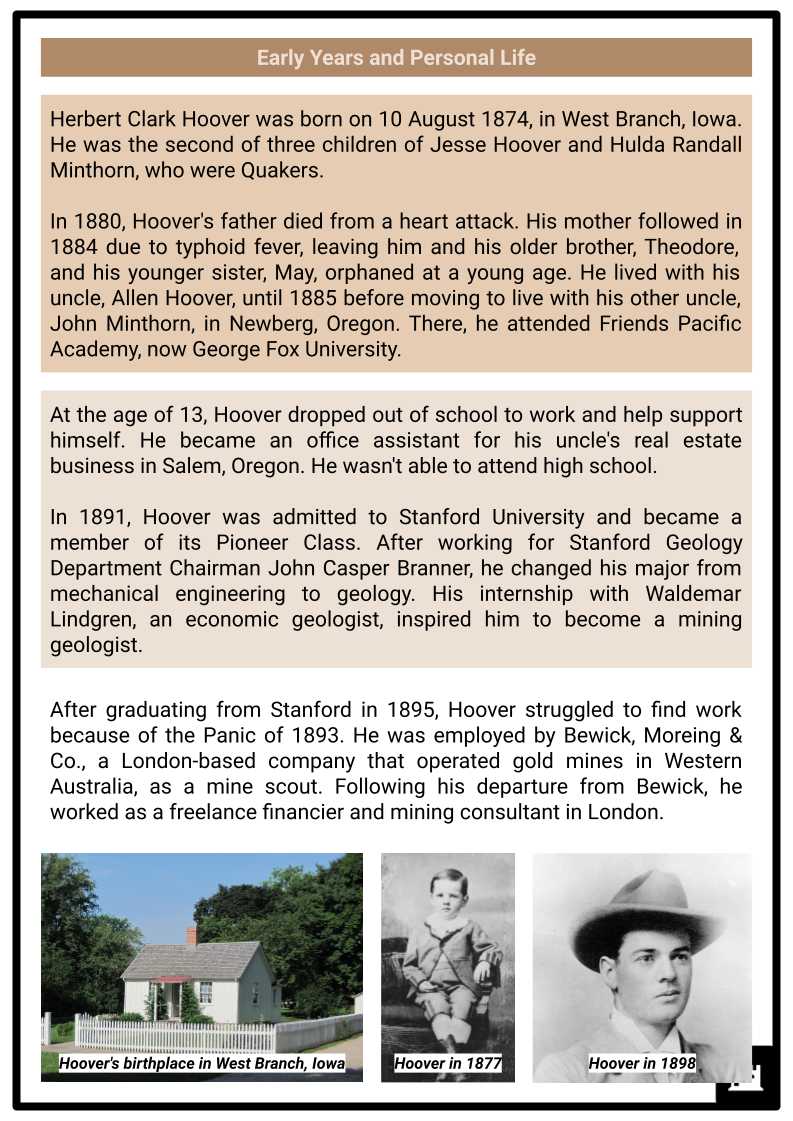
Student Activities
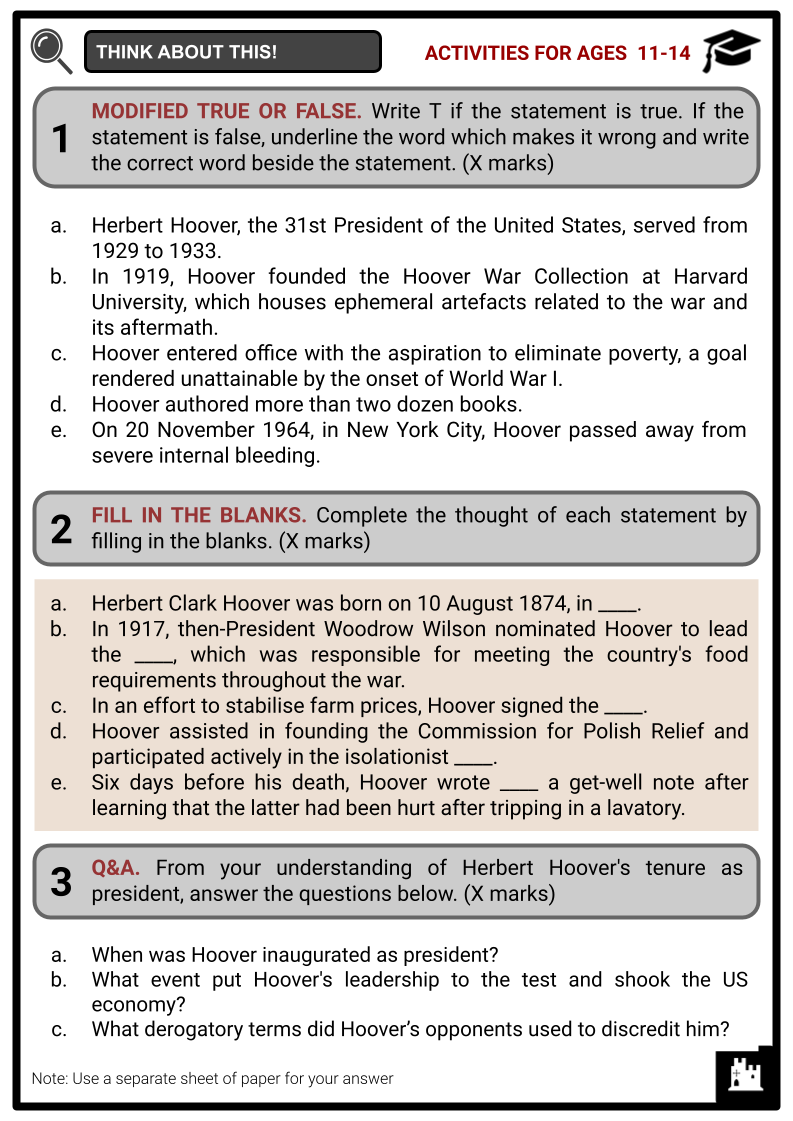
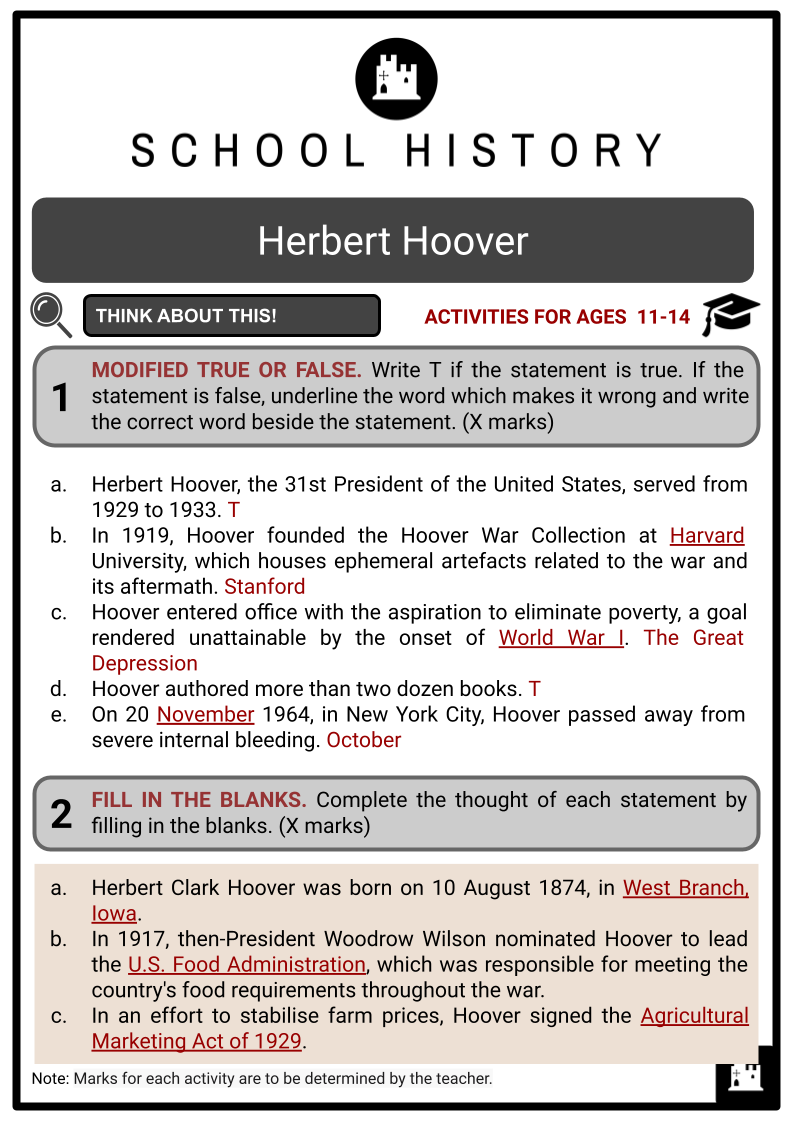
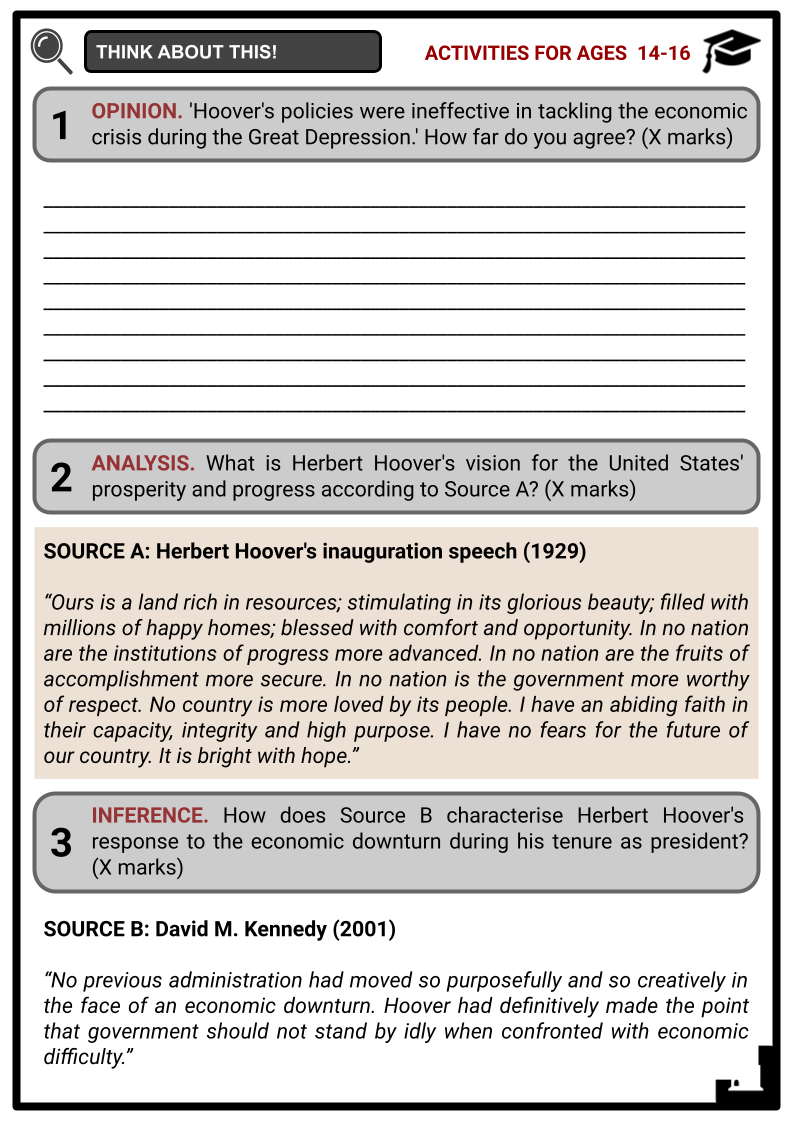
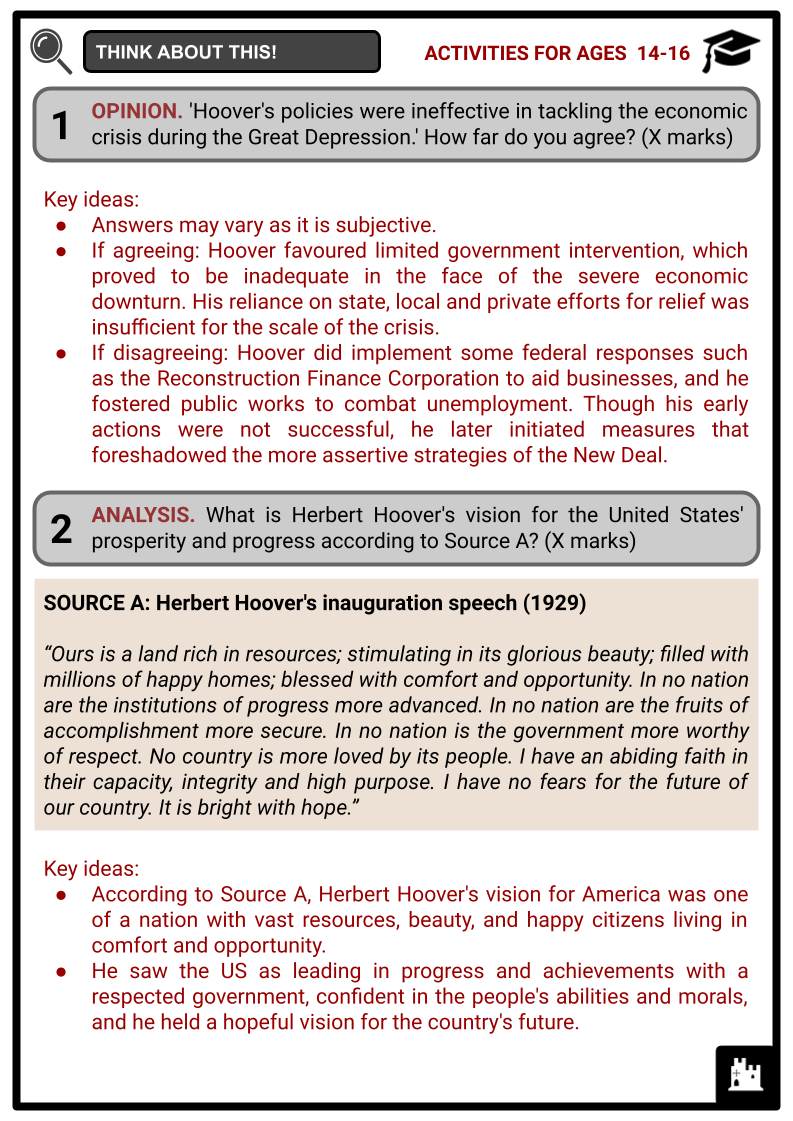
Summary
- Early Years and Personal Life
- Political Rise
- Presidency and the Great Depression
- Post-Presidency
- Death
Key Facts And Information
Let’s know more about Herbert Hoover!
Herbert Clark Hoover, the 31st President of the United States, served from 1929 to 1933. Before entering politics, he had a successful career as a mining engineer and was recognised for his humanitarian efforts during World War I. As president, he faced the challenges of the Great Depression and implemented various policies in an attempt to alleviate its effects. Hoover's presidency is often associated with the economic turmoil of the early 1930s, but his work in relief efforts and public service left a lasting impact on American society.
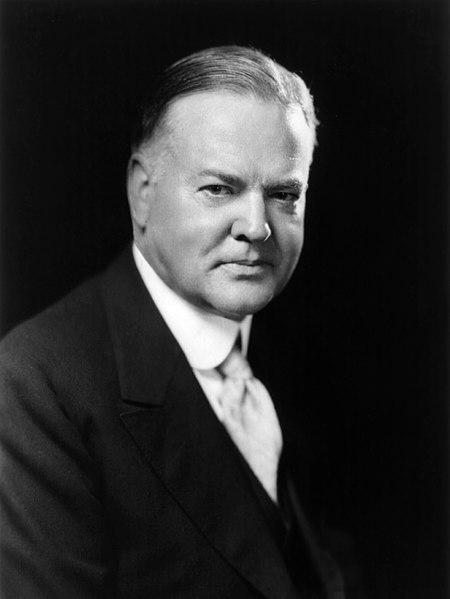
Early Years and Personal Life
- Herbert Clark Hoover was born on 10 August 1874, in West Branch, Iowa. He was the second of three children of Jesse Hoover and Hulda Randall Minthorn, who were Quakers. In 1880, Hoover's father died from a heart attack. His mother followed in 1884 due to typhoid fever, leaving him and his older brother, Theodore, and his younger sister, May, orphaned at a young age. He lived with his uncle, Allen Hoover, until 1885 before moving to live with his other uncle, John Minthorn, in Newberg, Oregon. There, he attended Friends Pacific Academy, now George Fox University.
- At the age of 13, Hoover dropped out of school to work and help support himself. He became an office assistant for his uncle's real estate business in Salem, Oregon. He wasn't able to attend high school.
- In 1891, Hoover was admitted to Stanford University and became a member of its Pioneer Class. After working for Stanford Geology Department Chairman John Casper Branner, he changed his major from mechanical engineering to geology. His internship with Waldemar Lindgren, an economic geologist, inspired him to become a mining geologist.
- After graduating from Stanford in 1895, Hoover struggled to find work because of the Panic of 1893. He was employed by Bewick, Moreing & Co., a London-based company that operated gold mines in Western Australia, as a mine scout. Following his departure from Bewick, he worked as a freelance financier and mining consultant in London.
- In 1899, Hoover married his college sweetheart, Lou Henry, and the couple went on to have two sons, Herbert Hoover Jr. and Allan Henry Hoover. The couple would remain married until 1944, when Lou Henry Hoover passed away. The Hoovers moved to the United States after 1916 and kept residences in Stanford, California, and Washington, D.C.
Political Rise
1917–1919: World War I and Humanitarian Work
- In 1914, World War I began with Germany and its allies invading Belgium, which led to a food crisis in the country. Hoover formed a committee to provide aid to Americans living in Europe, and the Commission for Relief in Belgium (CRB) was established to procure and import food for distribution.
- In 1917, then-President Woodrow Wilson nominated Hoover to lead the U.S. Food Administration, which was responsible for meeting the country's food requirements throughout the war. During his tenure, he implemented various initiatives to increase food production and conservation, such as Meatless Mondays and Wheatless Wednesdays.
- After World War I, 400 million people were at risk of starvation in Europe. Hoover oversaw the reconstruction of infrastructure and food provision through the American Relief Administration (ARA). In 1919, the ARA's US government funding ran out, leading to its becoming a private organisation.
- During the Russian Civil War, Hoover offered assistance to the vanquished German country and the starving Russian Soviet Federative Socialist Republic. The ARA's involvement saved millions of lives.
- In 1919, Hoover founded the Hoover War Collection at Stanford University, which houses ephemeral artefacts related to the war and its aftermath.
- Because of his involvement in the Wilson administration, Hoover – who was previously unknown to the American public – rose to prominence in the 1920 presidential election. Progressives of both parties were drawn to his wartime efforts and support of a minimum wage, a 48-hour workday and the abolition of child labour.
- Hoover has never been intimately associated with any party, despite his service. He registered as a Republican in March 1920 because he thought the Democrats had little chance of winning. However, his service alienated farmers, and after Hiram Johnson defeated him in the California primary, he lost the race for president.
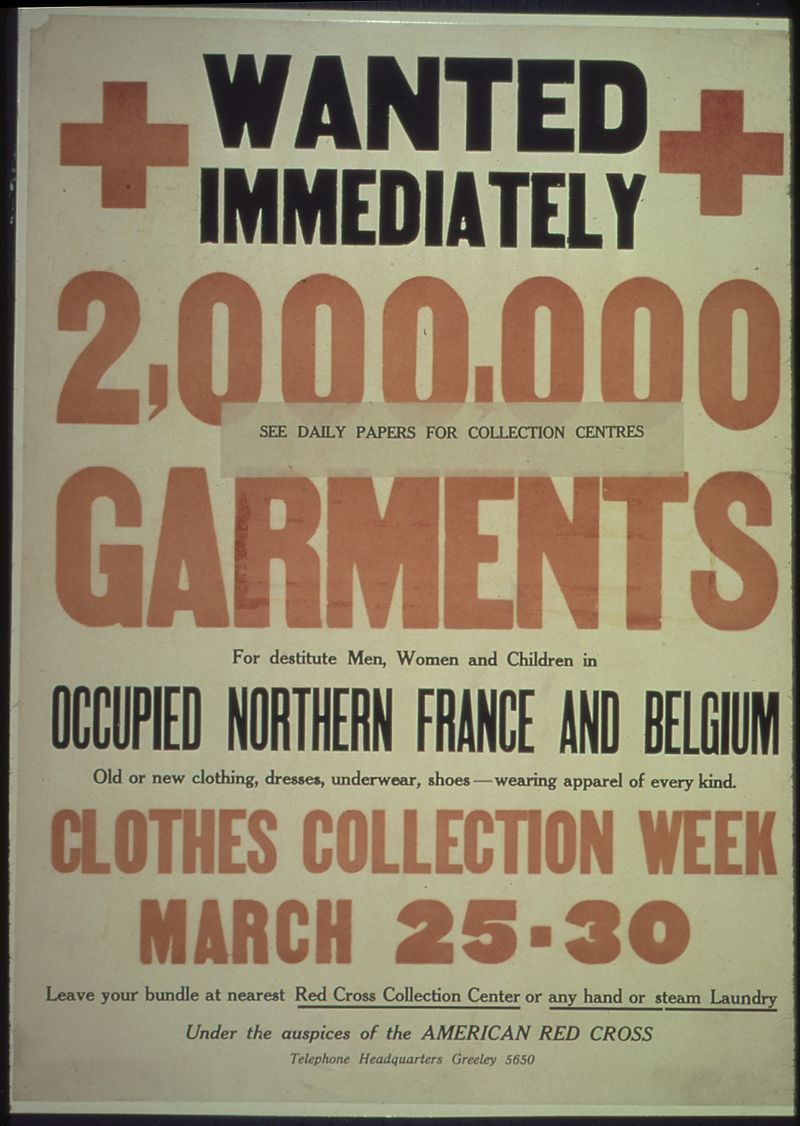
1921–1928: Secretary of Commerce
- Despite resistance from numerous Senate Republicans because of Hoover's progressive views and support for the League of Nations, then-President Harding named him Secretary of Commerce. He saw the Commerce Department as the centre of the country's growth and stability. As a corporatist, he aimed to strike a balance between capital, labour and government. He established multiple committees and sub-departments to oversee and regulate different facets of the economy, and he requested the power to coordinate economic issues throughout the government.
- Hoover's tenure as Secretary of Commerce had a significant impact on radio use in the US, with his radio conferences being essential to the establishment, expansion and regulation of radio transmission. In 1927, he also contributed to the passage of the Radio Act, which gave the government the power to interfere and shut down radio stations that it judged to be 'non-useful' to the general public.
- Hoover promoted runways, crop dusting and emergency landing grounds, which contributed to the early growth of aviation. He created the federal government's authority to license pilots and inspect aircraft, laying the groundwork for the subsequently established Federal Aviation Administration. Additionally, he promoted prudent company investments and product standardisation by turning the Commerce Department into a knowledge hub. By establishing offices abroad and marketing Hollywood films there, he encouraged trade between nations.
1928: Presidential Campaign and Election
- Capitalising on his successful tenure as Secretary of Commerce, Hoover decided to run for the presidency in 1928. He campaigned on a platform of continued economic prosperity and stability, and his efficient leadership during the war and in the Commerce Department was well-received by the public. On election day, he easily defeated Democrat candidate Al Smith, winning 444 of the 531 electoral votes and 58% of the popular vote with his vice president Charles Curtis by his side.
1929–1933: Presidency and the Great Depression
- On 4 March 1929, Herbert Hoover was inaugurated as the 31st President of the United States. In his inaugural address, he emphasised the need for continued economic development, international peace and unity in the nation. He opposed governmental coercion and promoted public–private collaboration in an effort to better the lives of Americans. In an effort to stabilise farm prices, he signed the Agricultural Marketing Act of 1929 and constituted a cabinet that was primarily made up of well-off, conservative businessmen. Notable members of his cabinet included Andrew Mellon as Secretary of the Treasury, Ogden Mills as Secretary of the Treasury, and Ray Lyman Wilbur as Secretary of the Interior.
- Hoover entered office with the aspiration to eliminate poverty, a goal rendered unattainable by the onset of the Great Depression, which presented significant obstacles to long-term economic stability. These included persistent issues in the agricultural sector, an oversupply of consumer goods, and escalating income inequality. Despite these challenges, Hoover favoured a localised approach where state and local governments, along with private charity, addressed relief efforts rather than direct federal intervention.
- In response to the stock market meltdown, Hoover moved swiftly to convene leaders of the business and labour sectors, persuaded railroads and public utilities to augment their building and maintenance expenditures, and lowered loan rates. Additionally, he procured an extra $100 million to sustain the Federal Farm Board's lending and procurement practices.
- Hoover's proposal to increase agricultural tariffs was linked to a bill that increased tariffs generally. He signed the Smoot–Hawley Tariff Act into law in June 1930 despite the bill's enormous unpopularity, which worsened the economy and caused a decline in foreign trade.
- Even though the country's unemployment rate rose to 11.9% in 1930, it remained unclear if the current economic slump would be more severe than the Depression of 1920–21. A greater economic catastrophe in 1931 resulted from a string of bank collapses in late 1930.
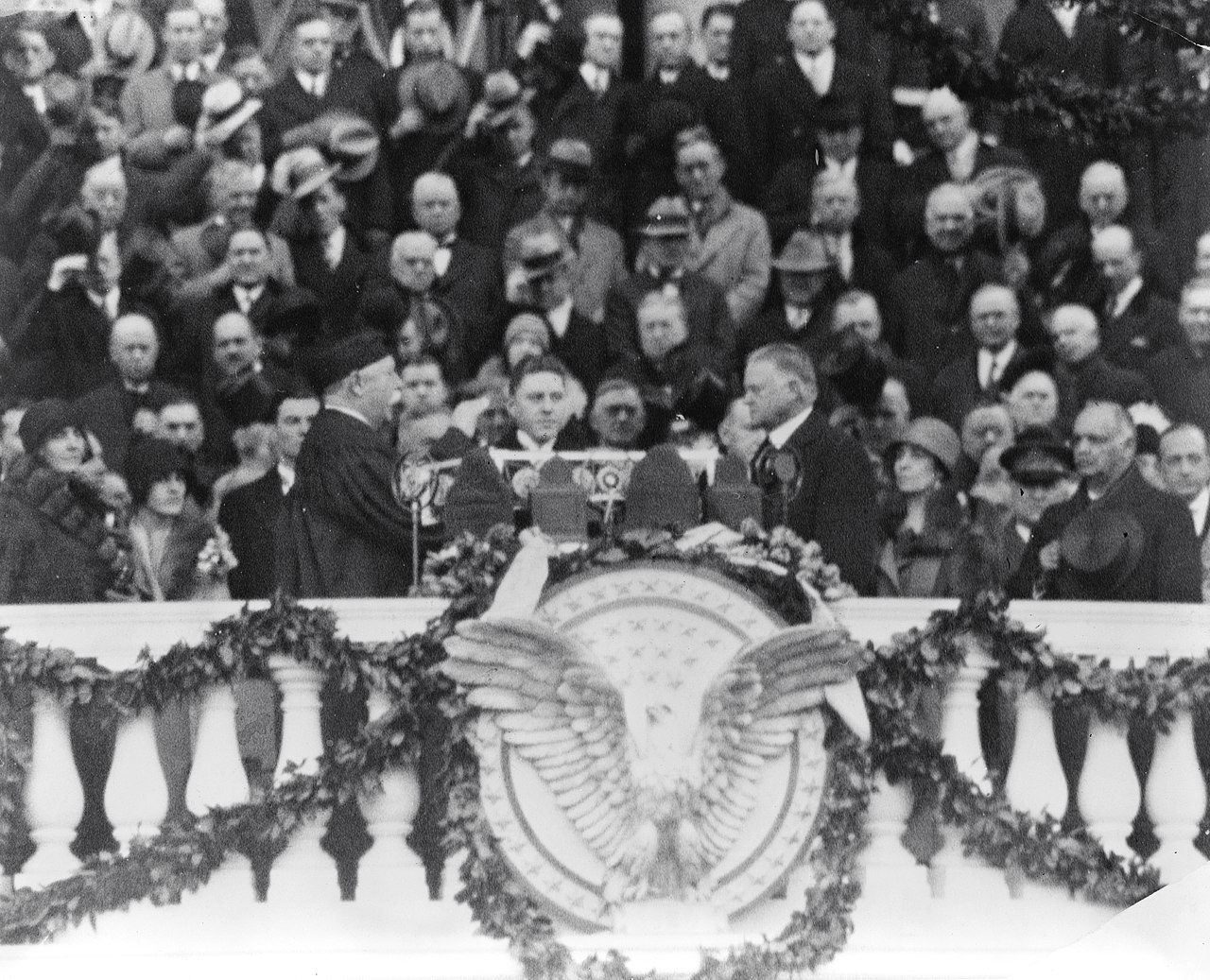
- Hoover saw the weak European economy as a primary contributor to the economic problems facing the United States and refused to give up on the gold standard. A one-year moratorium on European war debts was enthusiastically welcomed in both Europe and the US after he rallied legislative backing for it.
- When the unemployment rate hit 15% in the middle of 1931, there were increasing concerns that the nation was going through a depression much worse than previous economic downturns. Hoover's opponents created derogatory terms to discredit him, including 'Hooverville' (a shantytown and homeless camp), 'Hoover leather' (a cardboard covering for shoe holes), and 'Hoover blanket' (an old newspaper worn as a self-covering against the cold).
- As the economy deteriorated further, unemployment rates in early 1932 were getting close to 23%. Hoover responded to demands for greater federal involvement by persuading Congress to approve the creation of the Reconstruction Finance Corporation (RFC) in January 1932.
- He signed the Emergency Relief and Construction Act, the Glass–Steagall Act of 1932, and the Federal Home Loan Bank Act in the same month that the RFC was founded.
- Given the continued economic crisis, few gave Hoover much of a chance to win a second term in the 1932 reelection campaign. Since a large portion of the public held Hoover's administration responsible for the Great Depression, his attempts to defend his leadership were met with resistance.
Post-Presidency
- After leaving office in 1933, Hoover retreated from the public eye but remained active in public service. He authored more than two dozen books, one of which, The Challenge to Liberty, was a critique of then-President Franklin D. Roosevelt's New Deal. Although his works were well received, he wasn't able to win the Republican nomination, neither in 1936 nor 1940.
- Hoover, as a former US President, was well-known during World War II. When he met with Adolf Hitler in 1938, he conveyed his shock at the way the Jewish people were being treated in Germany. Since Roosevelt's tactics angered Japan and dissuaded France and the United Kingdom from reaching an 'accommodation' with Germany, Hoover thought that Roosevelt posed the greatest threat to peace. Following Germany's invasion of Poland, Hoover opposed US engagement in World War II, particularly the Lend–Lease initiative.
- Hoover assisted in founding the Commission for Polish Relief and participated actively in the isolationist America First Committee. After Belgium was occupied in 1940, he also helped Belgian citizens. In order to help Finnish citizens and refugees financially after the Soviet Union attacked Finland to start the Winter War, Hoover established the Finnish Relief Fund in December 1939.
- To his dismay, Hoover's disagreements with Roosevelt and his ongoing unpopularity meant that he was not asked to serve when the United States entered World War II. At the 1944 Republican National Convention, he declined to run for president and did not participate in the final election campaign.
- Unaware of the Manhattan Project and the atomic bomb, Hoover counselled then-President Harry S. Truman in 1945 to abandon the United States' demand for Japan's unconditional surrender due to the anticipated high death toll from the planned invasion.
- Despite having different ideologies, Hoover remained friends with Truman after World War II. In order to evaluate the conquered countries' food needs, Truman appointed the former president to travel to Rome, Italy and Germany under Allied occupation in 1946. In the German territories under American and British occupation, Hoover started a school lunch programme and wrote studies critical of American colonial policies.
Death
- In his last two years, Hoover battled three serious illnesses, including an intestinal tumour removal surgery in 1962. On 20 October 1964, in New York City, he passed away from severe internal bleeding. Six days before his death, he wrote Truman a get-well note after learning that the latter had been hurt after tripping in a lavatory. This is the last known text that Hoover wrote.
- In honour of Hoover, former presidents Truman and Eisenhower and President Lyndon B. Johnson attended a state burial held in the US Capitol rotunda. He was laid to rest in West Branch, Iowa, on the grounds of the Herbert Hoover National Historic Site, close to his birthplace and presidential library.
Image Sources
- https://en.wikipedia.org/wiki/File:President_Hoover_portrait.jpg
- https://upload.wikimedia.org/wikipedia/commons/thumb/0/08/%22Wanted_Immediately._2%2C000%2C000_Garments_for_destitute_Men%2C_Women%2C_and_children_in_occupied_Northern_France_and..._-_NARA_-_512616.jpg/800px-%22Wanted_Immediately._2%2C000%2C000_Garments_for_destitute_Men%2C_Women%2C_and_children_in_occupied_Northern_France_and..._-_NARA_-_512616.jpg
- https://upload.wikimedia.org/wikipedia/commons/thumb/0/0a/Taft_Hebert_Hoover_Oath.jpg/1280px-Taft_Hebert_Hoover_Oath.jp
Frequently Asked Questions
- Who was Herbert Hoover?
Herbert Hoover was the 31st President of the United States, serving from 1929 to 1933.
- What is Herbert Hoover most known for?
Herbert Hoover is most known for his presidency coinciding with the start of the Great Depression, making him often associated with its economic hardships.
- What was Herbert Hoover's approach to the Great Depression?
Hoover initially believed in limited government intervention and encouraged voluntary cooperation among businesses to combat the Depression. However, his approach was criticised as ineffective, and he later implemented some government relief programmes.
